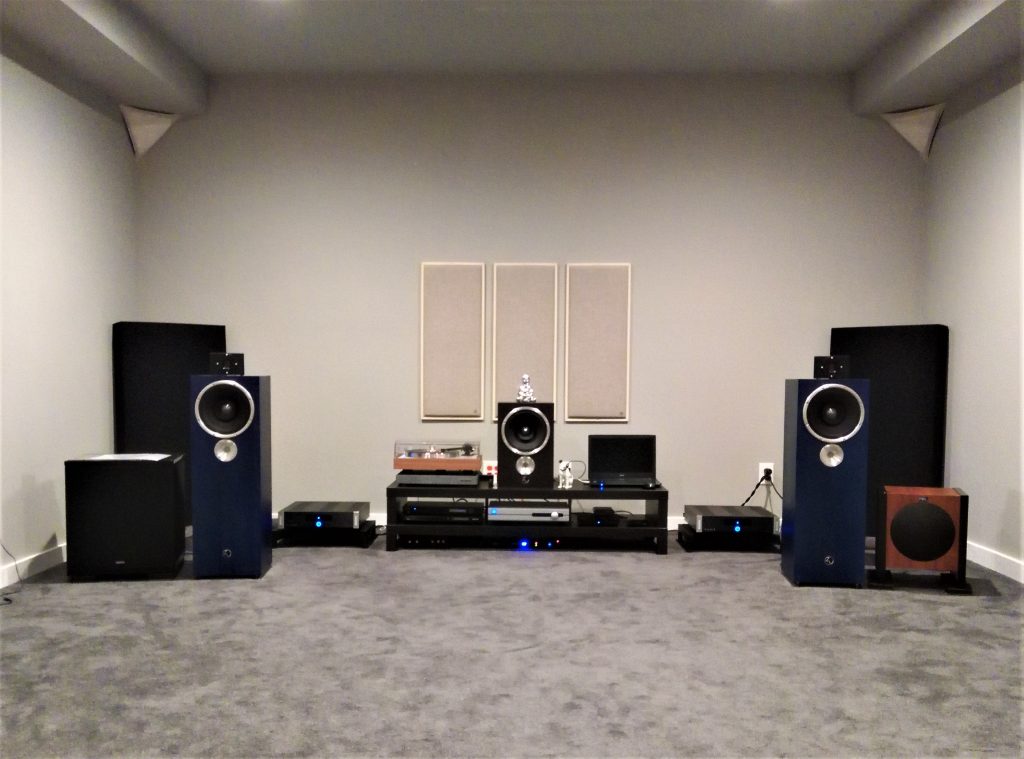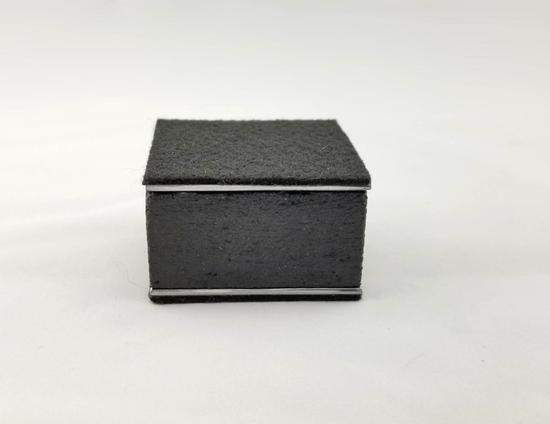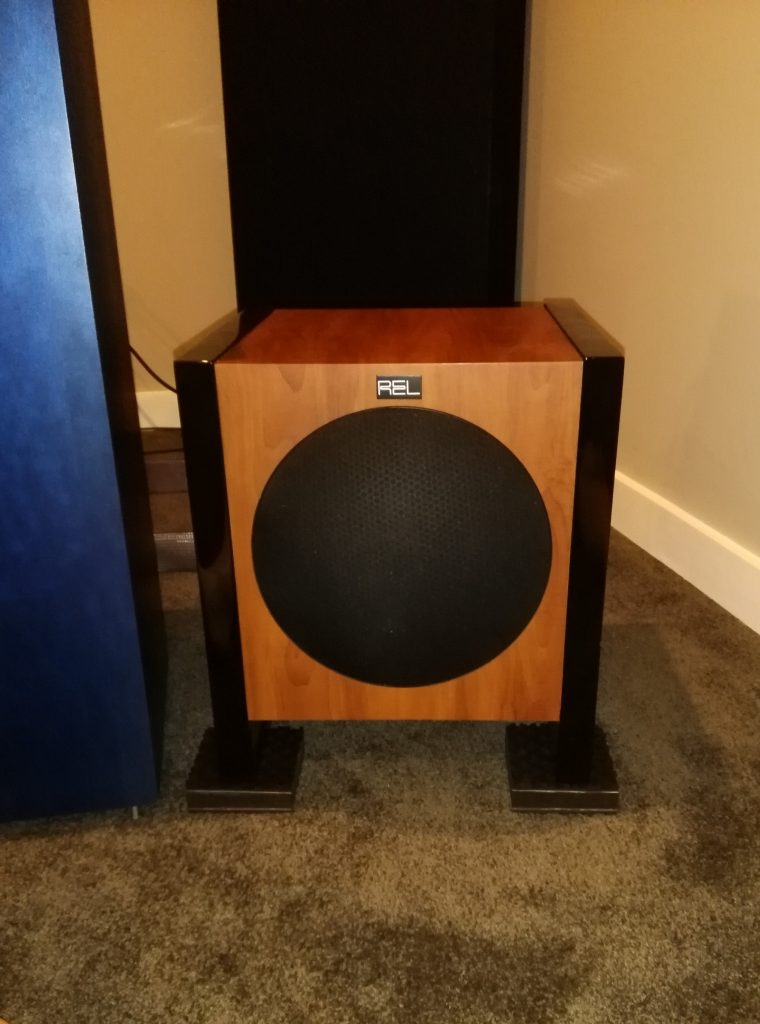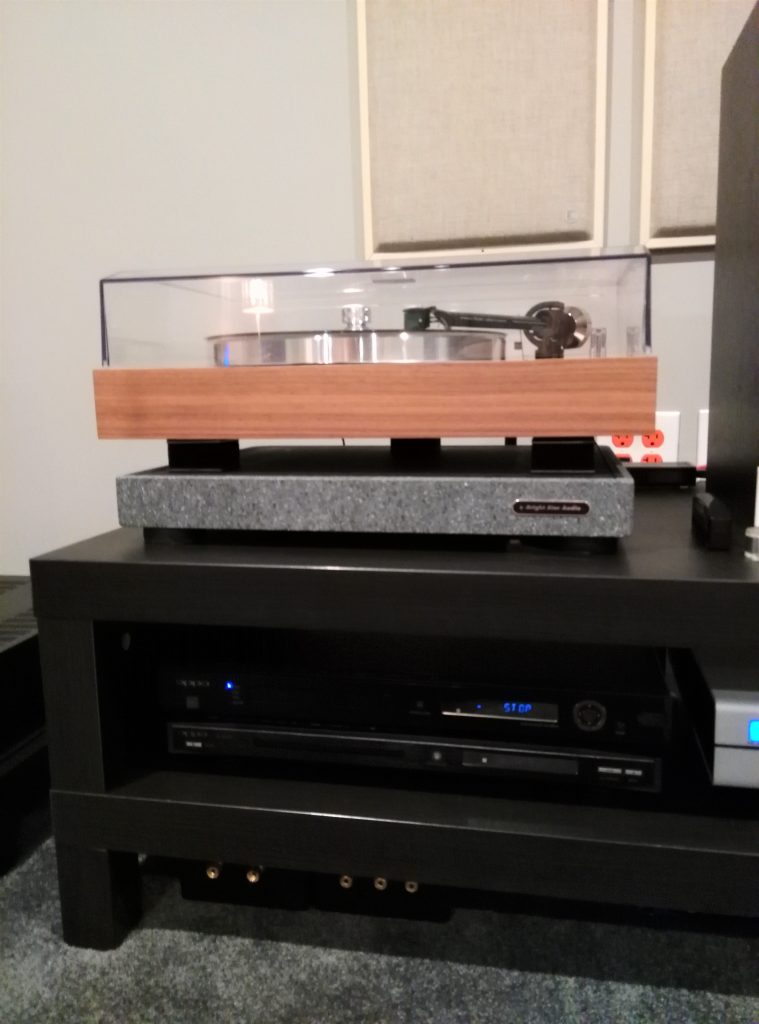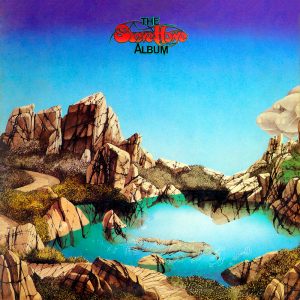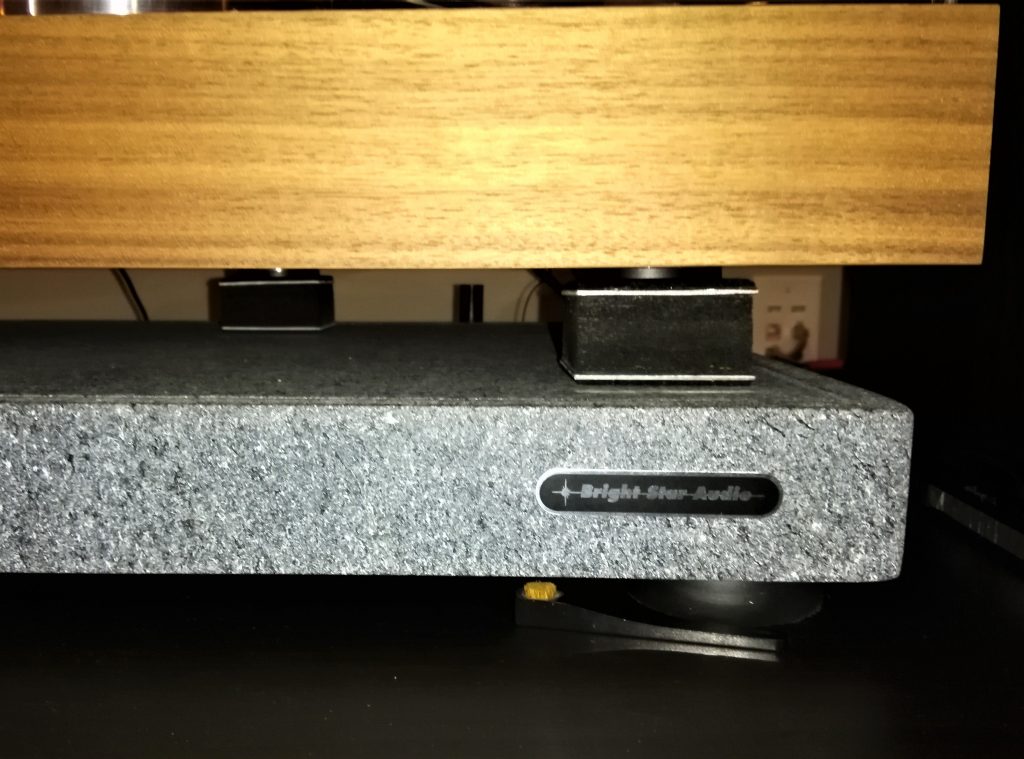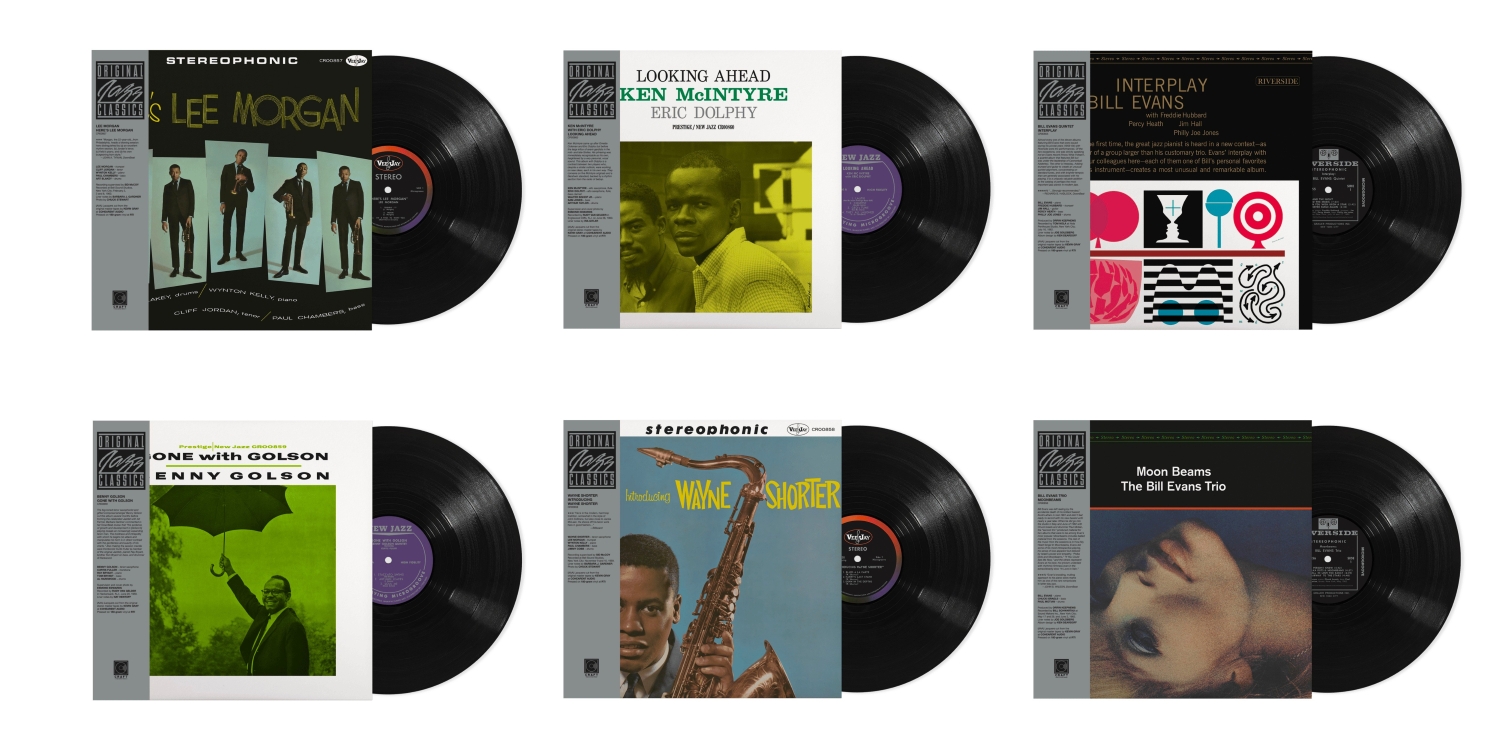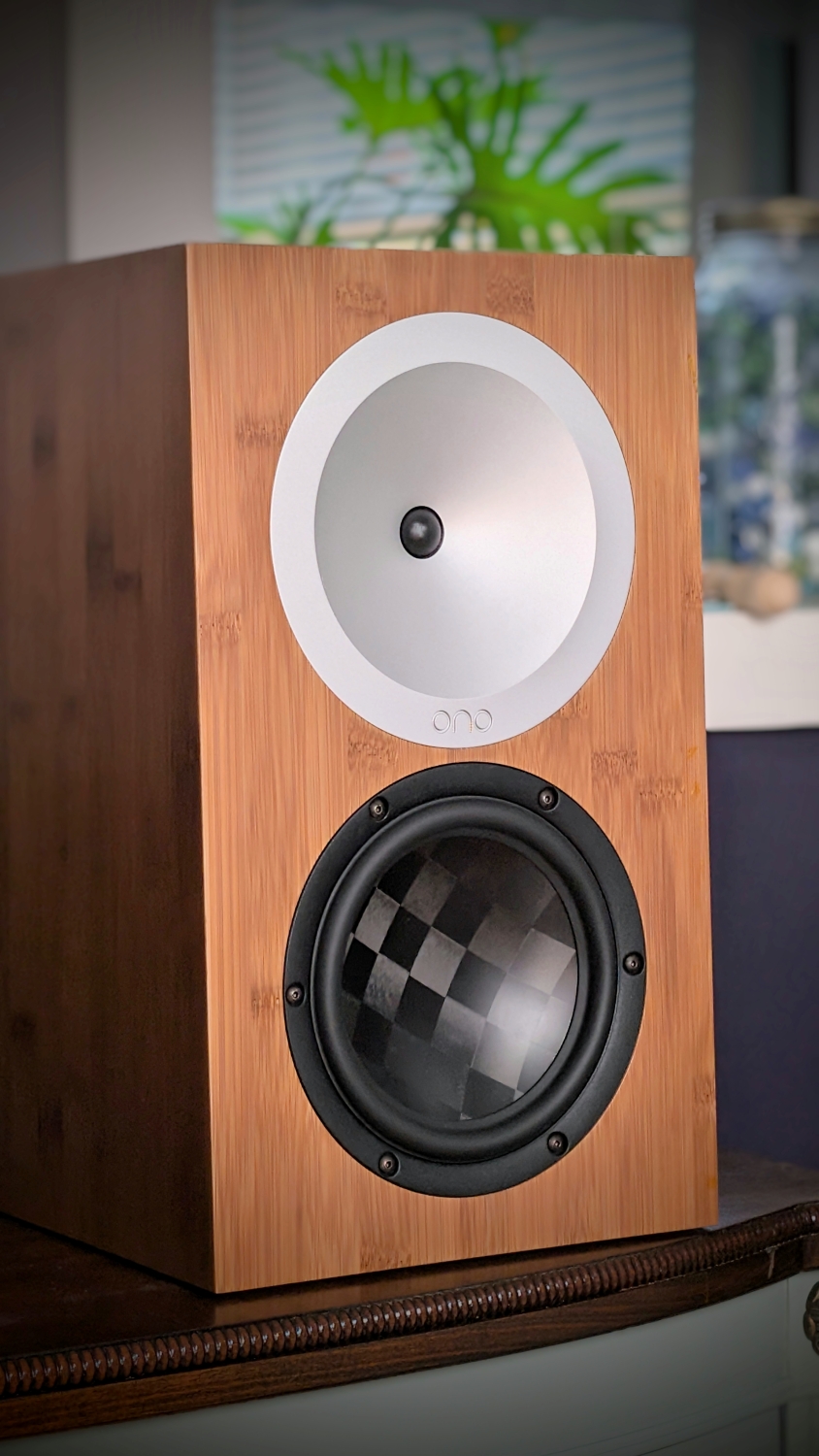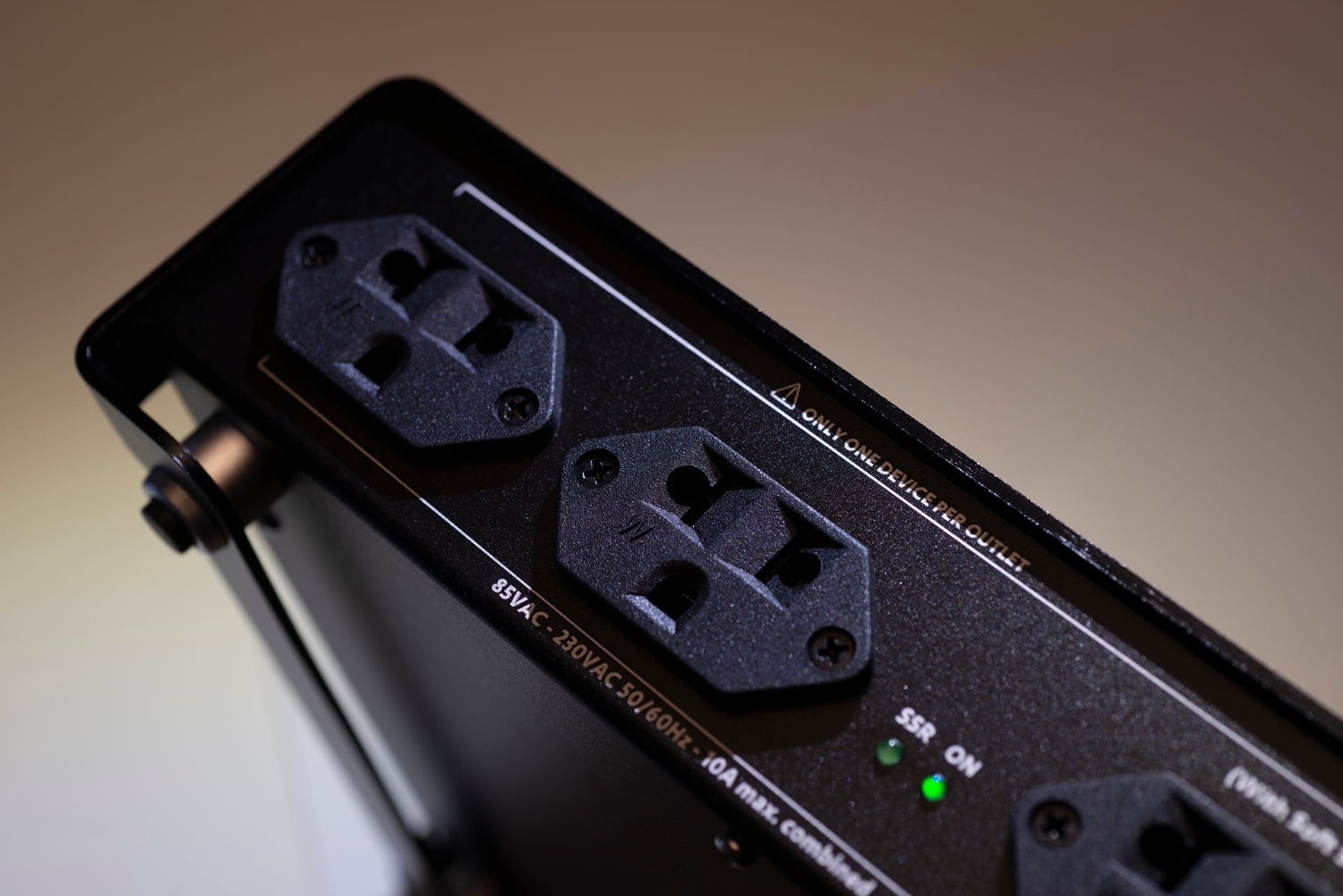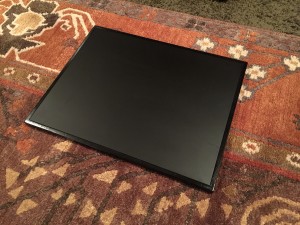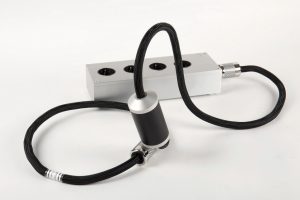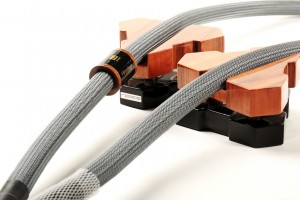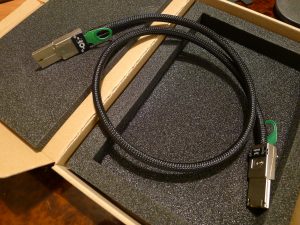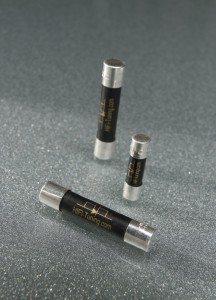When this review offer came from Norman Varney's company, AV RoomService, Ltd., I knew Norman from the Facebook experience, and I knew that he worked with custom audio installations that appeared to me to be fairly high-end. He seemed to me to be a really nice, knowledgeable guy, and I enjoyed seeing photos of some of the custom installations he was involved in. But the fact that his company designed and sold products aimed at improving the audiophile experience was completely off my radar. The product being offered for this review, the Equipment Vibration Protector (EVPs) were surprisingly similar in appearance to something else that randomly showed up on my Facebook feed recently from another company that mainly dealt in industrial resonance control. The big difference being, Norman's EVPs came being touted as the result of a significant amount of acoustical research, and that the EVPs incorporate proprietary damping materials in their construction. I'd seen ads for a few years for products aimed specifically at improving subwoofer resonance and vibration characteristics, but nothing that sparked much interest on my part or offered much of a rationale as to why I should even care.
First, a little personal background: when my wife and I built our new house eighteen months ago, my goal was to create a listening space that would offer significantly improved performance over the previous one. The old room measured about 12 x 20 with a 7 foot ceiling, and contained about 1600 cubic feet of space. The new one measures 16 x 26.5 x 9 with about 3800 cubic feet of space; it's substantially larger than the old one (and came with a very nasty slap echo at no extra charge). Despite my best intentions of creating a near state-of-the-art room—with as many considerations made as possible regarding trying to achieve the best acoustics within my budget—the wheels still ultimately came off.
The framers, plumbers, and electricians all went over budget, and the required positioning of the house on the lot ultimately ended up about seventy-five feet further in from the street than originally planned. Resulting in a substantially longer and more expensive driveway that alone cost an extra $7500. Just about everything imaginable that could have gone wrong, did go wrong, ending up with us going over-budget by more than thirty-thousand dollars. That overage ate up any extra cash that might have been available for more acoustically correct construction practices. Also, basically being newbies in terms of house construction, we didn't realize that we needed to be on-site at every moment of every day to confirm that the builders followed all of our instructions (and the blueprints!).
So what that ultimately translates into, is, that while I got the room of my dreams in terms of dimensions and basic construction practices, I was unable to go the extra mile to add the level of vibration control I'd like to have had. The ceiling has nine inches of insulation, along with six inches in the walls, and the drywall guys did a very good job in the fit and finish of the interior. And at least I was able to get dedicated electrical service to the room, to provide some level of RF isolation. It took about a month to tame that slap echo; I had some ASC panels and GIK Acoustic bass traps from the old place, and I bought some new Corning acoustical panels for the side walls from Home Depot. This actually worked very well for me, and the big plus was that the new room was so very well constructed otherwise that it essentially sounds incredible compared to the old room. The battle's not yet quite won, but all the buzzes and spurious vibrations from the old room are thankfully, conspicuously absent.
I subscribe to Paul's Posts from PS Audio's Paul McGowan; they're an entertaining and enlightening mix of interesting stories and technical information that really helps put the whole audiophile experience into perspective. Recently, one of the posts compared the two predominant types of listening rooms that Paul has encountered over his career in the audio biz. Type One is the room that is the typical, less-than-tidy audiophile setup with equipment and speakers placed for best sound, and with a variety of room treatments and dots, pucks, and other tweaks aimed at producing the best sound possible. And the almost ever-present stacks of LPs, CDs, equipment, you name it. Paul noted that those rooms usually tend to sound very good. Type Two is the room where everything, from equipment to furniture is all perfectly placed for aesthetic purposes; and sometimes—but not always—this configuration also (and surprisingly) results in pretty decent sound.
One of my design goals was to have the new room not only sounding great, but also with everything as perfectly placed as possible. Which would be the complete antithesis of my old room, which was filled with stacks of albums and CDs everywhere, as well as stacks of equipment either under review or awaiting review. I'm closer to my goal at the new place; it's much less cluttered than the old room, but it's still a work in progress. Paul M. seems to think that the randomness of objects scattered about the room tends to improve the overall sound versus a very symmetrical environment, so I haven't rushed to try and eliminate all the random stacks of equipment, albums, and CDs at the new location. And I'm very happy with the sound so far; I have spikes on the speakers, and my turntable sits on a Bright Star sand-filled base, with some of the other equipment sitting on either Tiptoes or Sorbothane footers of various configurations.
Now when I say I'm very happy with the sound in my new room, that's the sound that I'm hearing inside the room. The part of the new listening room experience that's less than stellar is the amount of sound that's transmitted to the main floor of the house from my basement location. Quite typical of newer construction, there's a layer of drywall on the listening room ceiling, followed by nine inches of insulation, followed by three inches of dead-air space, followed by the subfloor material (some type of composite). And that's followed on the main floor by a thin layer of foam padding with three-quarter-inch solid bamboo flooring on top of that. With a fairly thick rug placed on top of that, covering much of the main-floor living area. I'd originally wanted to put an anti-resonant barrier between the ceiling and the floor above, but that very quickly got priced out of the equation. So I basically had to hope for the best, which generally isn't too bad for folks on the main level with the vast majority of what I typically listen to. When those twin subs kick in, though—watch out, upstairs!
Back to the EVPs: they come in a variety of configurations with differing sizes and materials, depending on your particular needs. Their core construction appears to be basically the same throughout the range, with multiple layers of compressed, high-density molded glass fibers that are attached to each other with a proprietary damping compound. A cold-rolled steel plate is then attached to both the top and the bottom of the EVP. The purpose of the steel plate is to allow the use of spikes or cones on your equipment without compromising the internal structure of the EVP. The major appearance difference between the various incarnations is the outer layer, which is either a felt pad or a honey-combed layer of rubber, and is determined by your intended use. While the overall thickness of the three different grades of EVPs that I received appear to me to be about the same, Norman tells me that the varying densities of the glass fibers used in the different EVP models determine the weight rating appropriate for the equipment they're intended to be used with.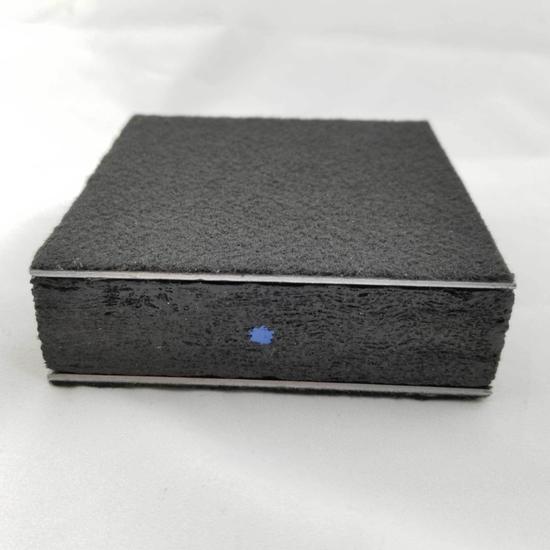
Norman asked me to send a picture or two of my room and stereo setup, and to describe the equipment complement as thoroughly as possible, to guarantee that the EVPs supplied would match my needs as closely as possible. He seemed very interested in my room construction details, what type of flooring (concrete floor, covered with carpet and pad), and the subwoofers and turntable I was using. And if I was currently using any kind of isolation measures with either. I mentioned that both subs had inserts for spikes, which weren't currently in use, and also that I had an older Bright Star sand-filled base underneath the ProJect The Classic turntable. He asked questions about the weight of the subs and table, then emailed me a list of the complement of EVPs he'd chosen for my particular install. Which consisted of four large (four-inch), heavy-density rubber EVPs for the Definitive Technology sub, four large, medium-density rubber EVPs for the REL sub, and three small (two-inch), medium density felt EVPs for the ProJect table.
On the day the EVPs arrived, our nephew Michael (we jokingly call him Uncle Mike) was out and about with us, and as we pulled into our driveway, he remarked that it looked like someone had left a twelve-pack at the side door to the garage. Indeed, the package did look to be about the size of a twelve-pack, but when I bent over to lift it—zow, this thing's really heavy! Further inspection revealed that it was from Norman Varney; this really surprised me, as I just wasn't expecting the EVPs to be quite so, well, substantial. Inside, while unpacking them, I made a mental note, of sorts: very industrial looking. Beth, on the other hand, was less delicate: "What in God's name are those!" she blurted out.
I offered an explanation of my conception of what the EVPs would offer to the system, and also pointed out that they'd essentially be placed in such a manner as to draw minimal attention to themselves. This seemed to quell her enthusiasm somewhat, but honestly, the EVPs are bigger and heavier in person than the impression I got from a cursory trip to Norman's website. I also noticed that a couple of the EVPs had blue dots on them; what were the blue dots for? A little investigation on my part (translation: I read the information leaflet included in the box) revealed that the blue dots indicated a heavy-density EVP, and further inspection also revealed that there were in fact blue dots on the four HD units (for the large Def-Tech sub). There was also a note from Norman—and I found this particularly interesting—regarding my impression of the appearance of the EVPs; should they perhaps be sexier looking, and perhaps they should ship in less pedestrian packaging. We'll get to that later.
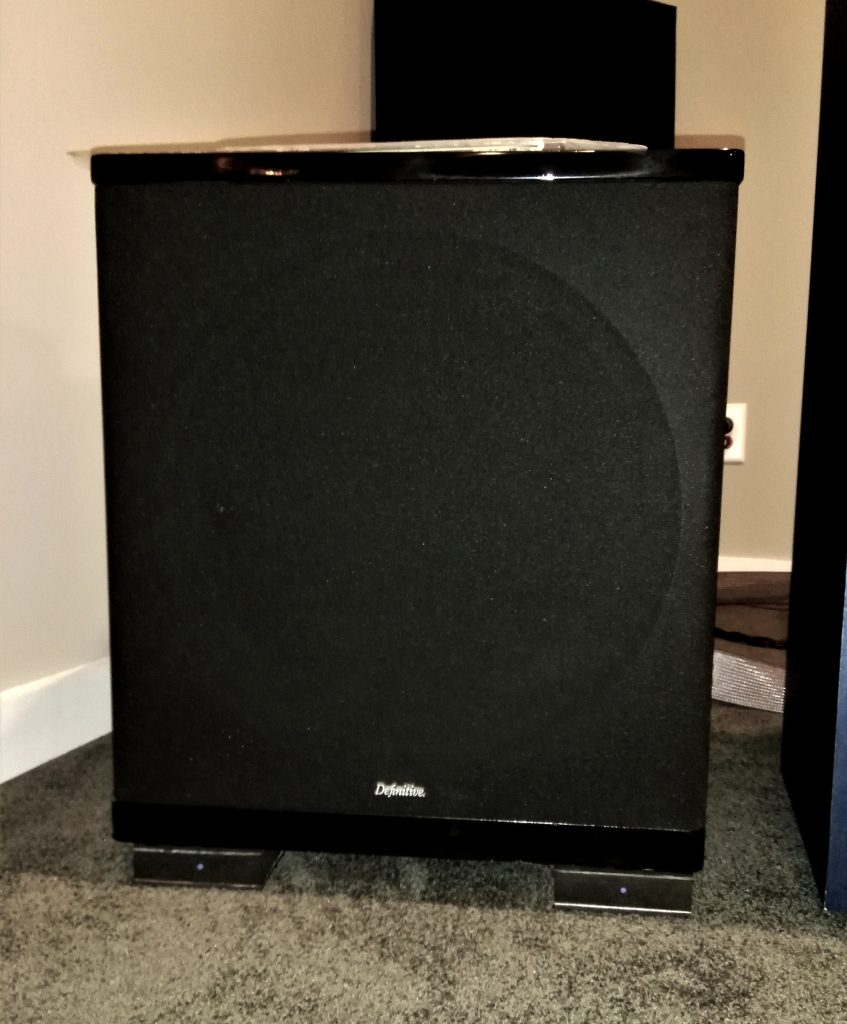 So I excused myself, and headed downstairs to the listening room to place the EVPs in their intended locations. This proved effortless with regard to the two subs; correct placement only took a couple of minutes each. The turntable proved a bit more problematic; I almost called upstairs for a second pair of hands. Ultimately I prevailed—placing any kind of footer under equipment that only has three points of support has always struck me as a bit of a challenge. And I was concerned that the three medium-density felt EVPs would render the ProJect table somehow less stable. But that ended up not being a concern at all; if anything, The Classic turntable seemed more rigidly in place on the Bright Star platform than before. And the EVPs come with a spirit level supplied, so with a little extra time I was able to get everything properly geometric. Looking at the EVPs after setup, I made another quick mental note: the EVPs really don't call much attention to themselves at all. Even underneath the turntable, where I was a bit worried that they would look—perhaps—slightly less-than-elegant. No worries: the EVPs blend in perfectly with everything.
So I excused myself, and headed downstairs to the listening room to place the EVPs in their intended locations. This proved effortless with regard to the two subs; correct placement only took a couple of minutes each. The turntable proved a bit more problematic; I almost called upstairs for a second pair of hands. Ultimately I prevailed—placing any kind of footer under equipment that only has three points of support has always struck me as a bit of a challenge. And I was concerned that the three medium-density felt EVPs would render the ProJect table somehow less stable. But that ended up not being a concern at all; if anything, The Classic turntable seemed more rigidly in place on the Bright Star platform than before. And the EVPs come with a spirit level supplied, so with a little extra time I was able to get everything properly geometric. Looking at the EVPs after setup, I made another quick mental note: the EVPs really don't call much attention to themselves at all. Even underneath the turntable, where I was a bit worried that they would look—perhaps—slightly less-than-elegant. No worries: the EVPs blend in perfectly with everything.
I'd already informed Norman prior to the EVP's arrival that I had a couple of pressing reviews underway, and it might be a couple of months before I was really able to take the time to properly evaluate them. Norman was, as always, very gracious and accommodating. My thought process was to just let the EVPs do their thing, and when the time was right, I'd do mine. Now, off to kick Uncle Mike to the curb in a rousing game of dominoes!
The following morning, I went downstairs for a typical Sunday listening session; I started off with a couple of LP sides, then gravitated towards selections from my music server over the next couple of hours. Here, for me, has been the real shocker of the EVP experience; the impact of having them in my system was literally immediate. I don't really know what I was expecting in terms of how the EVPs would impact my listening routine; I didn't really see how the EVPs would require any break-in or burn-in, or what or how I expected to use in evaluating their performance. I only know this: from the first moment the needle touched the surface of the LP, I immediately knew that a paradigm shift was taking place in how I was now going to be appreciating the sound coming from my system. I was totally not expecting this!
If you click on my name (highlighted in red) at the review intro, you can see a list of the equipment that populates my current system. It's not too esoteric, but there's some very solid gear there; it probably would tag at around ten grand-or-so if you take into consideration cables, tweaks, panels, etc. In another lifetime (and what seems like eons ago) my system priced at closer to $35K, and I honestly believe that the current one would go toe-to-toe with the $35K system, even bettering it in key areas (digital playback, for example). Having been in my current "dream" listening environment for eighteen months, I really didn't think that much I could do short of a major equipment purchase (new amps, bigger Zu's, PS Audio DirectStream DAC) could make any kind of shocking improvement to my playback quality. Obviously, I was so wrong.
From the first notes of the first LP, Yes guitarist Steve Howe's excellent The Steve Howe Album, I noticed several things almost simultaneously. The sound emerged from a deeper, blacker background, but there was no mere analog trickery going on here. The EVPs, in combination with the Bright Star base, had seriously lowered the noise floor by reducing airborne vibrations I didn't even realize were there. I know this sounds probably very clichéd, but it was almost as though I was listening to the ProJect Classic table and its Hana EL cartridge for the very first time. But this time with no appreciable subharmonics and any accompanying vibrational noises, it was like I was listening to a $10,000 table/cart combo instead of a $2000 one. Granted, the Hana is a superb cartridge, and The Classic is no slouch either, and in combination they extract about as much music and as little noise from the LP groove as can be expected at the price point. It's the finest analog playback system to probably ever grace my personal system. But with the EVPs in place, its performance is elevated exponentially. And a nice little bonus I've discovered is, with the EVPs in place, The Classic is so very well-isolated, I can now raise and lower the rather stiff-hinged dust cover with zero impact on ongoing playback.
The impressive impact of the EVPs wasn't limited to the analog equipment. I started playing digital files that were more bass-heavy; one album that I'm particularly enamored with is Rickie Lee Jones' Pop Pop, which is a pretty crazy amalgam of jazzy standards and stylish pop interpretations. I particularly like her accompaniment on this disc, which includes some stellar acoustic bass work by the late Charlie Haden. His bass is extremely well-recorded, and I've found it will challenge even very good systems and rooms; I've been using this disc as an evaluation tool for good bass reproduction for years. One track in particular (and my favorite on the disc), "I'll Be Seeing You," was the bane of my existence at my old place, because you just couldn't turn the music up to reference levels without the room or equipment distorting excessively. And this is a tune that includes a complement of bass, acoustic guitar, a couple of muted horns, and Rickie Lee's voice. Doesn't seem too challenging, huh? In the new room with the EVPs, Charlie Haden's bass was rendered with absolute fidelity—and at any volume level. Yes, Virginia, there is a Santa Claus!
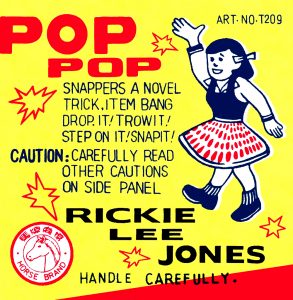 The quality of the bass not only seemed deeper, but also much clearer and more impactful. The overall effect of the EVPs in the listening room is an audiophile's dream: deeper, blacker backgrounds; a less congested midrange; and more tuneful and well-defined bass. While I thought this review would be something of a process, my impressions were confirmed within the first few hours and have remained consistent over the couple of weeks they've been in place.
The quality of the bass not only seemed deeper, but also much clearer and more impactful. The overall effect of the EVPs in the listening room is an audiophile's dream: deeper, blacker backgrounds; a less congested midrange; and more tuneful and well-defined bass. While I thought this review would be something of a process, my impressions were confirmed within the first few hours and have remained consistent over the couple of weeks they've been in place.
Here's the part I wasn't expecting: not only have the EVPs totally transformed the listening experience inside my room, but the EVPs underneath the subwoofers also have helped reduce the amount of vibrational noise transmitted to the main level of the house. I know that the EVPs decouple the subs, effectively reducing a lot of in-room vibration, I just didn't expect that to translate into a significant reduction of bass vibrations upstairs. I can now listen to most everything I normally listen to at my preferred volume level, without creating complete chaos elsewhere in the house. And when I listen to Miles or Monk, the bass levels upstairs are surprisingly muted compared to without the EVPs in place. Previously, you could not only feel and hear the bass, but you could also experience a complete range of spurious vibrations. Those are thankfully gone when listening at reference, but sane levels. Crank some "Dominance and Submission" from Blue Oyster Cult—and I mean really crank it—and yes, there's no free lunch, and no mystery where the sound is coming from. But for the typical fare that I generally listen to, the reduction of dBs is truly impressive.
I'm blown away by the EVPs; the difference isn't subtle, and the time I've spent listening over the past couple of weeks has been in amazement at the improvement wrought by these relatively unobtrusive devices. Oh, by the way, Norman seemed rather keen to get my impression of whether I thought the EVPs were too pedestrian in appearance, and perhaps nicer packaging might be in order. In an email I related my experience with a recent review of a product from a Chinese manufacturer that arrived in a monstrously oversized "beauty box," which was meaningless to the performance of the product, and probably cost a ridiculous amount of money to produce and ship. I think it's part of their culture that the packaging needs to impress on the same level as the product. But I also think the typical audiophile is much more concerned about whether any degree of meaningful performance is offered by the product, regardless of how sexy it might appear. As well as the EVPs work, I told Norman I wouldn't change a thing. Very highly recommended!
EVP Medium Density 2-Inch Square
Retail: $29 (USD)
EVP Medium Density 4-Inch Square
Retail: $95 (USD)
EVP Heavy Density 4-Inch Square
Retail: $95 (USD)
AV RoomService, Ltd.
All images courtesy of AV RoomService and the author





